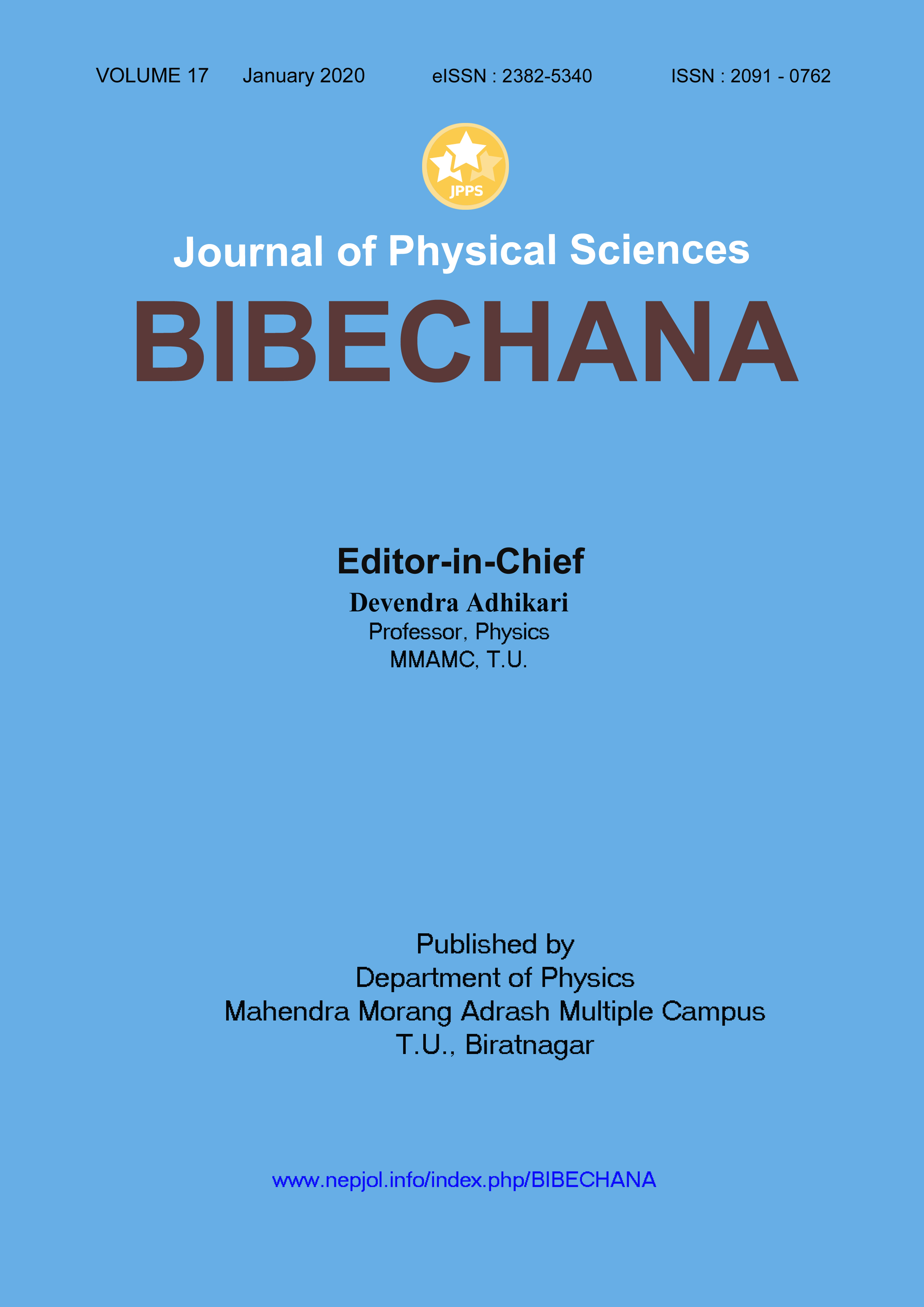Natural dyes as photo-sensitizer in solar cells
DOI:
https://doi.org/10.3126/bibechana.v17i0.25599Keywords:
Natural dyes, Dye-sensitized solar cell, Thin film, Spray pyrolysis, ZnOAbstract
The objective of this research is to employ the natural dyes in dye-sensitized solar cell (DSSC). On account of eco-friendly, renewable, and non-hazardous properties of natural dyes over silicon, a semiconductor, photo-sensitizer in conventional solar cells, cyclohexane extract of Terminalia alata, a natural dye, was employed as photo-sensitizer. The photoanodes ZnO and 5% Al-doped ZnO for DSSCs were developed by spray pyrolysis. The X-ray diffraction (XRD) has shown hexagonal wurtzite structure of ZnO with lattice constants a = 3.2487 Å and b = 5.1518 Å having particle size 25.85 nm for ZnO and 33.17 nm for Al-doped ZnO. The DSSC properties such as solar conversion efficiency (η), short-circuit current density (Jsc), open-circuit voltage (Voc), and fill factor (FF) were found to be 0.31%, 2.10 mA/cm2, 0.73V, and 45% for ZnO photoanode and 0.37%, 2.25mA/cm2, 0.70 V, and 52.10% for 5% Al-doped photoanode respectively.
BIBECHANA 17 (2020) 27-32
Downloads
Downloads
Published
How to Cite
Issue
Section
License
This license enables reusers to distribute, remix, adapt, and build upon the material in any medium or format for noncommercial purposes only, and only so long as attribution is given to the creator.




